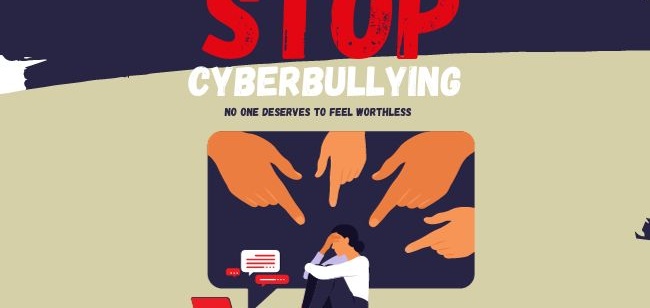Cyberbullying, a word popularized in the digital age, is an increasing concern in today's society. It is the use of technology such as smartphones, social media, and the internet to harass, threaten, or humiliate others. While cyberbullying affects people of all ages, young students are particularly vulnerable. Let's look at the concept of cyberbullying, its consequences on pupils, and how teachers may assist in combating this serious problem.
Understanding Cyberbullying
Cyberbullying can take various forms, including sending hurtful messages, spreading rumors, producing offensive memes or photos, and impersonating someone else online to harm their reputation. This can happen across multiple platforms, ranging from text messaging, and social media to online gaming communities. Unlike conventional bullying, cyberbullying can be unrelenting because it occurs around the clock and often allows the bully to remain anonymous.
Effects on Young Students
- Emotional Impact: Cyberbullying can have a significant emotional impact on your students. Victims frequently experience fear, anxiety, depression, and helplessness. Constant harassment might undermine their self-esteem and self-worth.
- Academic Performance: Cyberbullying can have an impact on a student's ability to focus on their studies. The stress and mental instability it causes can result in a drop in academic performance, which can have consequences that persist.
- Isolation: Young victims of cyberbullying may retreat from both online and offline social connections. This solitude can cause feelings of loneliness and alienation.
- Physical Health: The emotional stress caused by cyberbullying can manifest physically as migraines, stomachaches, and difficulty sleeping.
- Long-term impacts: The impacts of cyberbullying may last into adulthood, resulting in mental health concerns and an increased susceptibility to anxiety and depression.
How Teachers Can Help
- Education and Awareness: Teachers can help raise awareness regarding cyberbullying. Incorporating it into the curriculum and initiating discussions on responsible online behavior can assist students in understanding the consequences of their activities.
- Creating Safe Spaces: Teachers should establish a safe and supportive environment in the classroom. If students are being cyberbullied, encouraging open communication can help them confide in their teachers.
- Monitoring and Reporting: Teachers can keep track of their students' internet activities both in and out of the classroom. If they notice indicators of cyberbullying, they should intervene immediately, involving parents and administrators if necessary.
- Counseling and Support: Schools should provide counseling services to assist victims of cyberbullying in dealing with the emotional toll. Teachers can also direct students to resources and support organizations that might help them triumph over this difficulty.
- Promoting Digital Literacy: Teachers should incorporate digital literacy into their teachings, highlighting the need for responsible online activity, privacy, and the consequences of cyberbullying.
- Encourage Bystander Intervention: Teachers can teach pupils the value of bystander intervention. Encourage your students to speak out for their peers and report cases of cyberbullying when they see it.
- Cyberbullying regulations: To address cyberbullying, schools should have clear and thorough rules in place. To protect pupils, teachers should be conversant with these policies and act within their framework.
Cyberbullying is a serious and persistent phenomenon that has a significant impact on students. Its emotional, academic, and long-term implications necessitate our immediate attention and dedicated efforts. Teachers have an important role in preventing and responding to cyberbullying. They may help preserve their students' well-being by creating a supportive environment, educating them about appropriate online activity, and taking immediate action when required. It is our common responsibility to ensure that pupils can navigate the internet world without fear of cyberbullying's hidden potential risks.
Want to learn more? We offer Self-paced Online training on "Safe use of Technology for Teachers and Students" ..(and other courses) Contact us via WhatsApp/SMS +234 806 068 8856












Comments